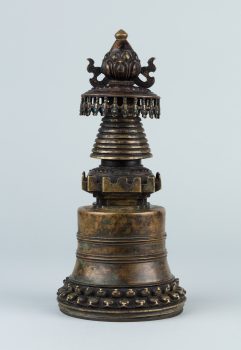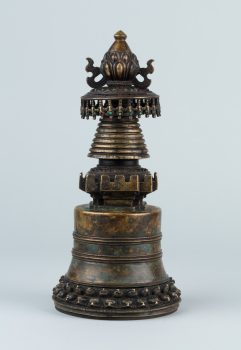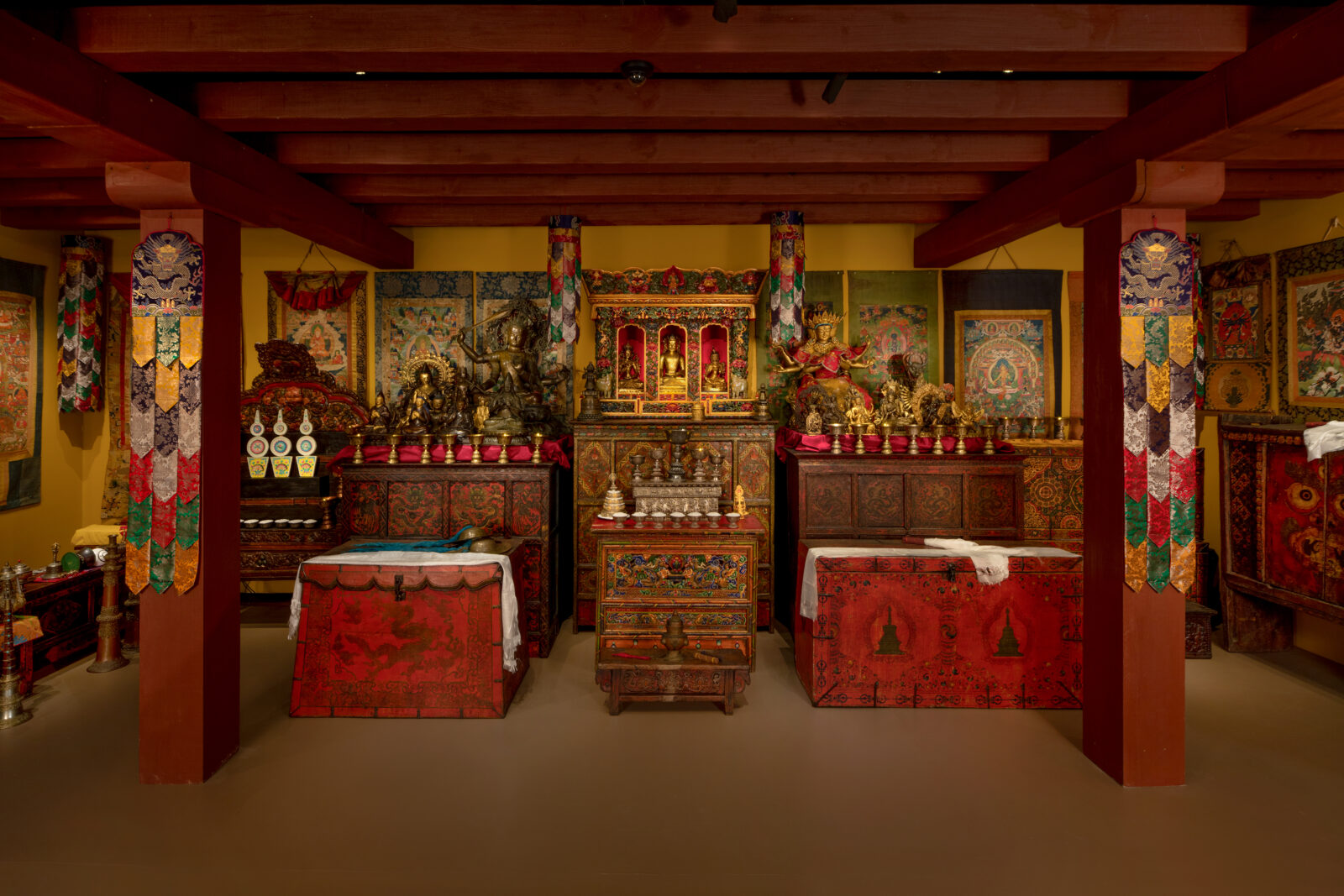Tibet
13th-14th century


Tibet
13th-14th century


The stupa is a symbol found across all Buddhist traditions. It originated in India as a mound made to hold sacred remains, like those of the historical Buddha Shakyamuni. This is not limited to the mortal remains of a holy person but may also include objects associated with that person, such as clothes, as well as sacred texts, articles of worship, and figures made of clay and the ashes of the deceased (tsa tsa). While a statue or painting of a buddha represents the divine body of an enlightened being and a book symbolizes divine speech, a stupa represents the mind of supreme spiritual awakening and is thus a symbol of buddhahood.There are several different traditional types of stupa, and this metal sculpture is an example of a Kadam stupa and can be differentiated from other kinds of stupas by its bell-like shape. This style of stupa was introduced to Tibet by the Indian scholar Atisha (982–1054) in the mid-eleventh century.

Photo by Dave de Armas
In Buddhism merit is accumulated through engaging in positive actions that lead to positive results, such as better rebirths. Buddhists gain merit by making offerings, donating to those in need, reciting mantras, and other good deeds.
Stupas were originally burial mounds housing relics of Buddha, and now take many forms, from small votives to large structures, and contain relics or other sacred objects.
Today, Tibetans primarily inhabit the Tibetan Plateau, situated between the Himalayan mountain range and the Indian subcontinent to the west, Chinese cultural regions to the east, and Mongolian cultural regions to the northeast. During the 7th to 9th century, Tibetan rulers expanded their empire across Central Asia, and established Buddhism as the state religion.
Get the latest news and stories from the Rubin, plus occasional information on how to support our work.